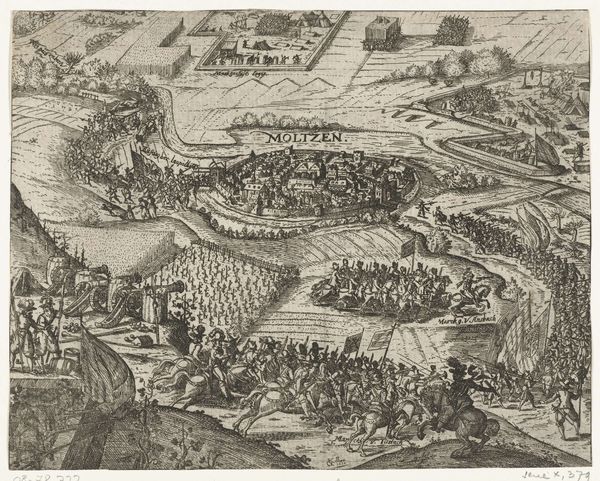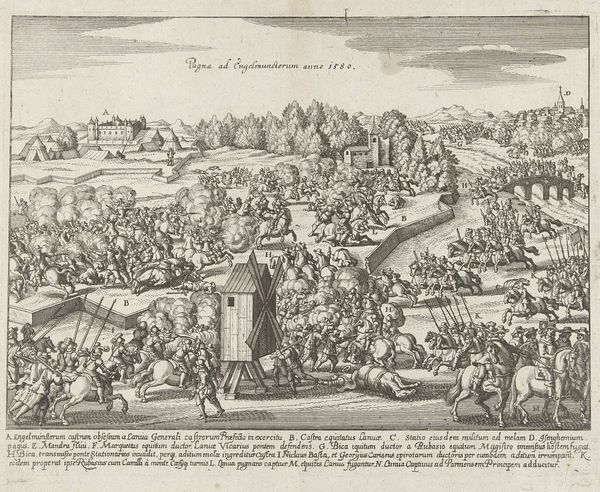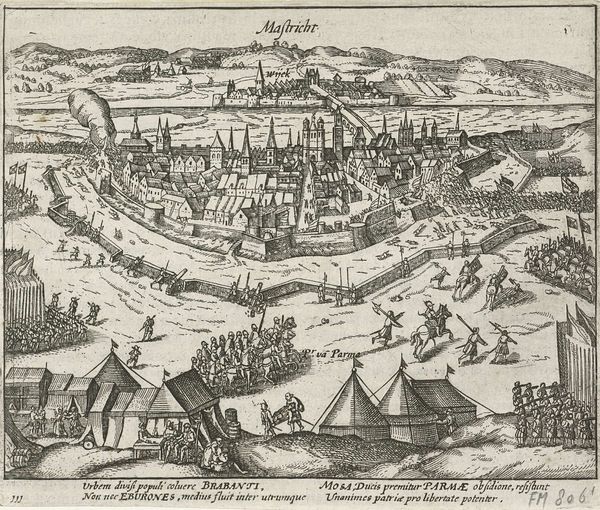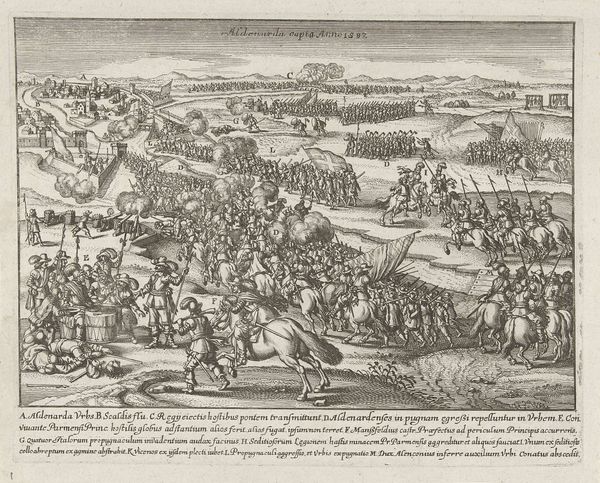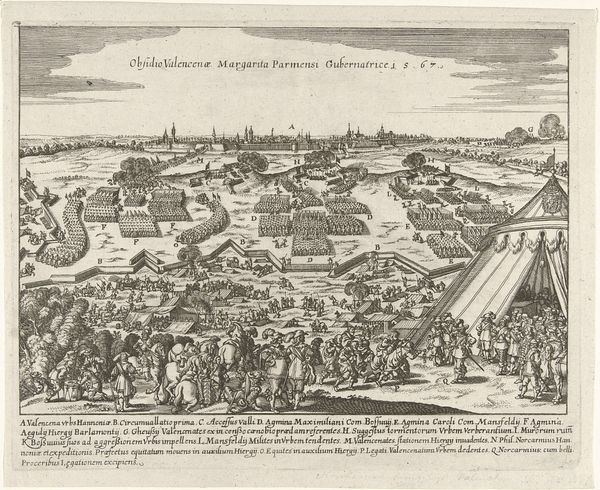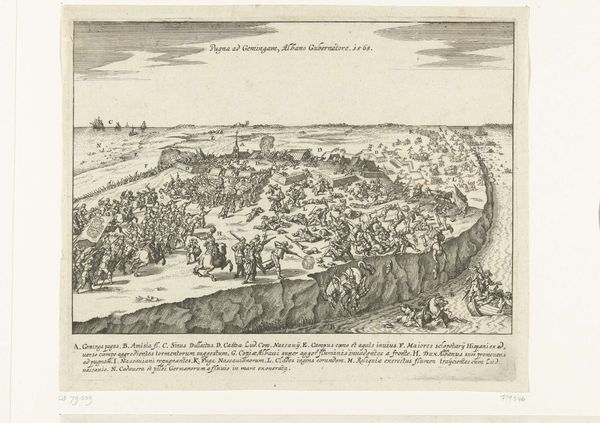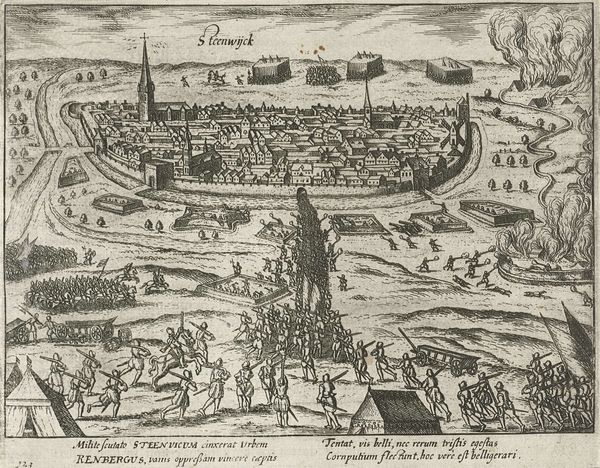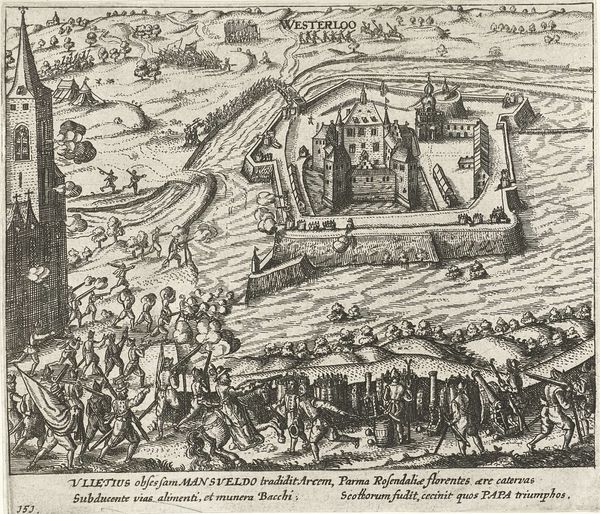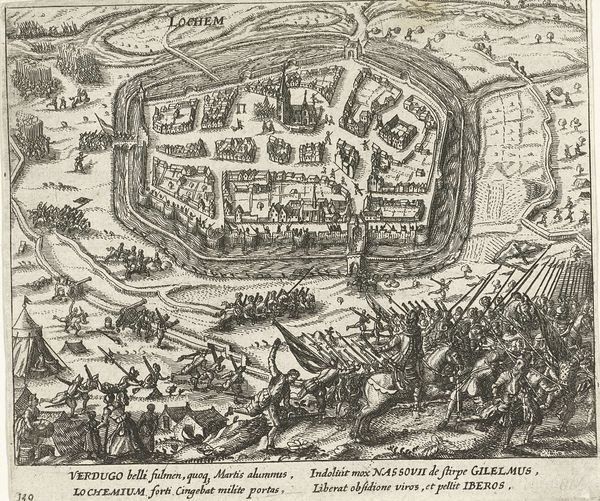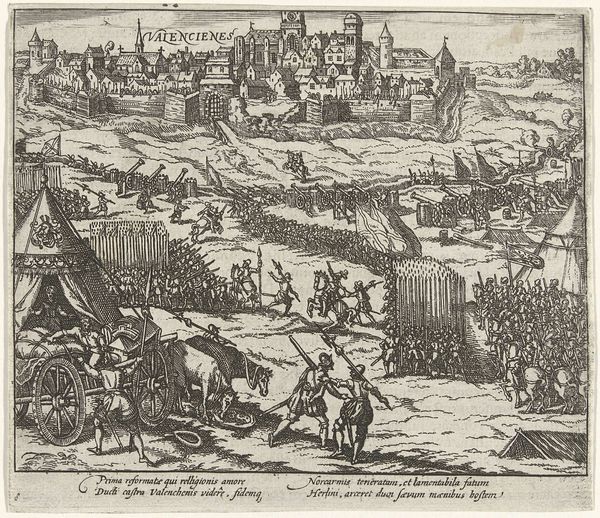
Verovering van Le Cateau-Cambrésis door de hertog van Anjou, 1581 1613 - 1615
0:00
0:00
print, engraving
#
narrative-art
# print
#
old engraving style
#
personal sketchbook
#
cityscape
#
history-painting
#
engraving
#
realism
Dimensions: height 140 mm, width 172 mm
Copyright: Rijks Museum: Open Domain
Curator: Let's turn our attention to this intricate engraving titled "Verovering van Le Cateau-Cambrésis door de hertog van Anjou, 1581." Though created between 1613 and 1615, it depicts a historical event from nearly thirty years prior. It's currently held in the Rijksmuseum collection. Editor: My immediate impression is one of meticulously rendered chaos. The sheer volume of figures and the dense architectural details are striking. It seems like every inch is covered in detail. Curator: Absolutely. This print, likely from a workshop rather than a named artist, would have circulated widely. Consider how such images shaped public understanding of military campaigns and political power. What purpose did its production serve at the time? Editor: Well, engravings were the mass media of their day, right? It’s interesting to think about the materials involved. Copper plates, the labor of the engraver, the ink, and paper - all playing into the consumption of this single image, endlessly reproduced. Curator: Indeed. Notice how the anonymous artist blends realistic and schematic representations? The siege itself seems almost like a stage set, highlighting key moments for a distant audience. Editor: Yes, it's carefully constructed, the linear perspective focusing your eye to the back. And this contrasts oddly with the foreground activity - look at those individuals seemingly caught mid-stride, almost frozen in place. It’s strange, the balance between accurate depictions of siege weaponry and rather more theatrical posturing. Curator: Precisely! Consider, too, what isn't shown, what is excluded or emphasized based on the patron’s agenda. History, as we know, is rarely unbiased, and what gets immortalized, as an engraving to be reprinted multiple times over? The perspective it creates for its target market is essential. Editor: It certainly provides a tangible, material link to an important historical moment, presented in a format easily distributed and digested, which at the same time provides an interesting look into the process and labor required for this historical communication. It also illustrates the development of a visual culture around warfare, and that these images were commodities of knowledge as much as aesthetic pieces. Curator: So well observed. Its influence lies not merely in documenting an event but in constructing its enduring narrative. Editor: A confluence of artistry, social forces, labor, and strategic reproduction all colliding on a sheet of paper! Fascinating.
Comments
No comments
Be the first to comment and join the conversation on the ultimate creative platform.
